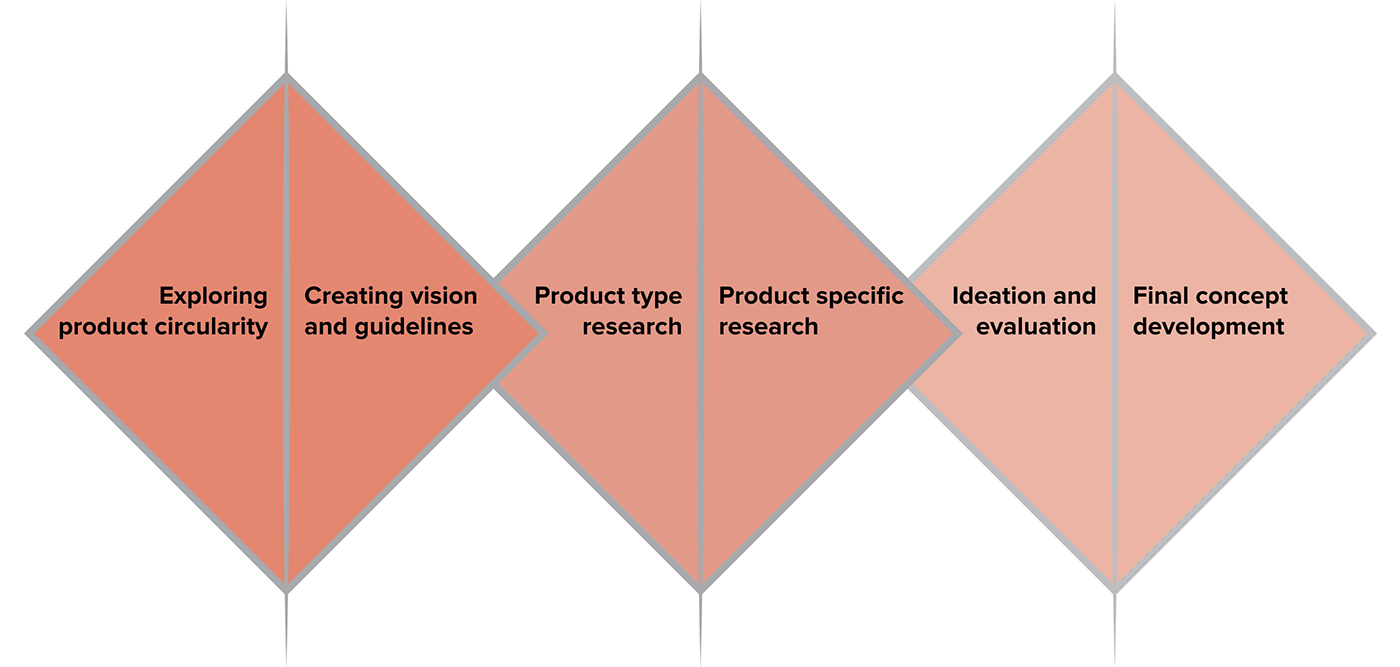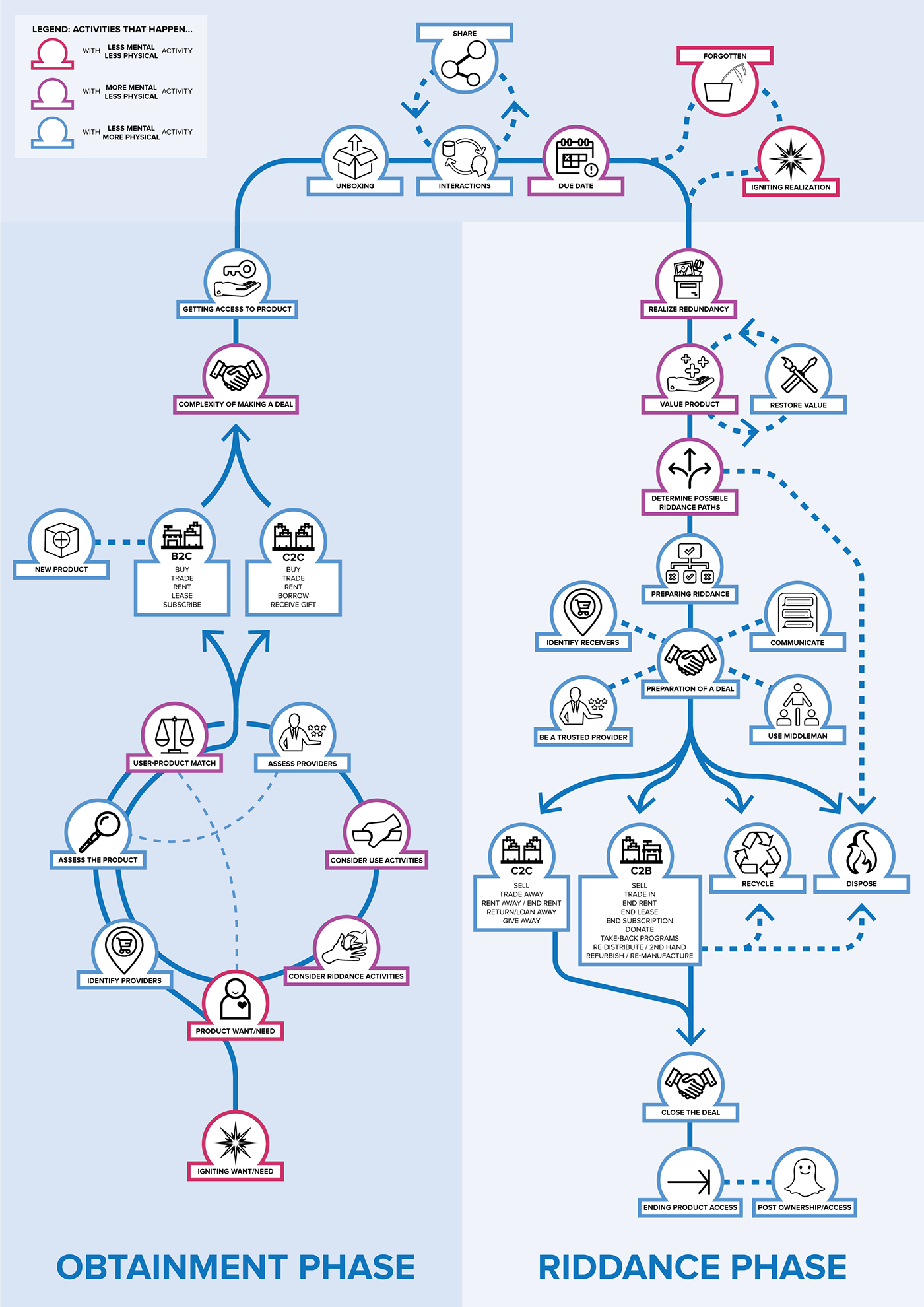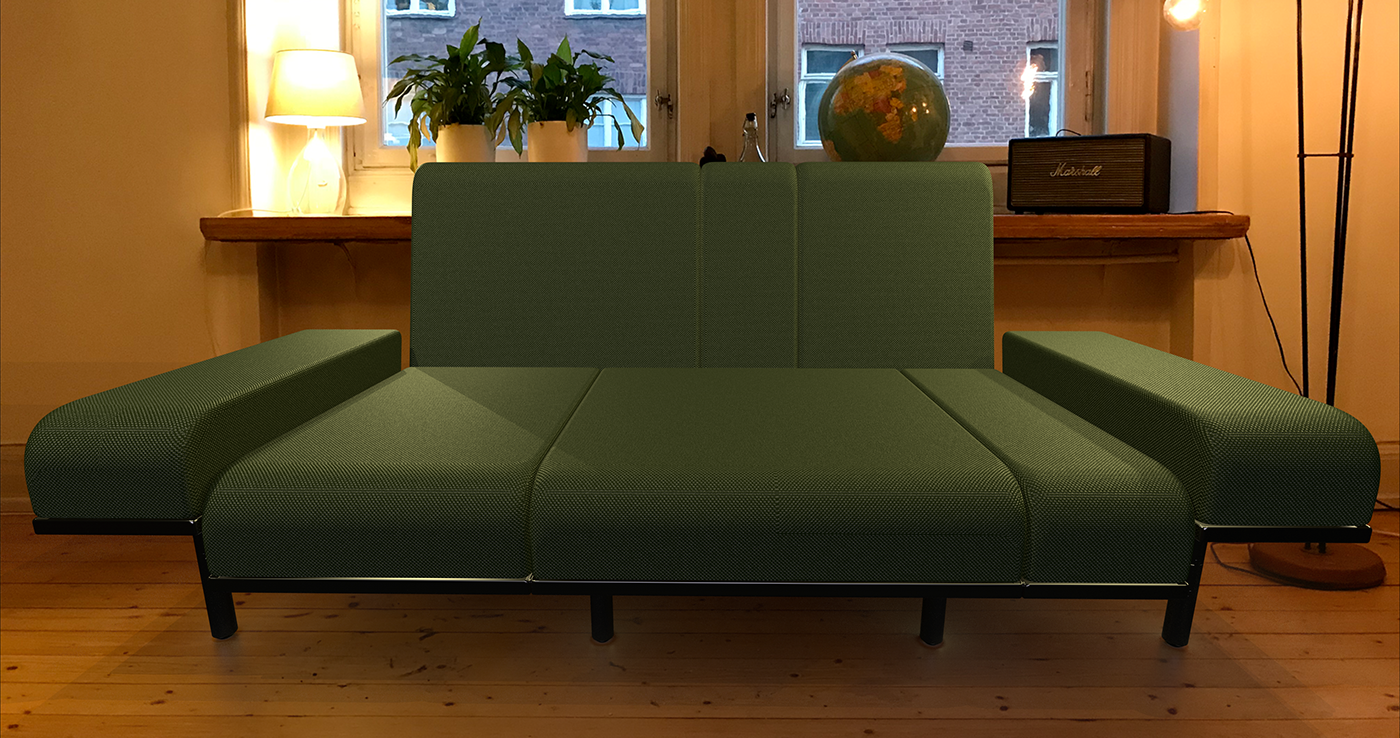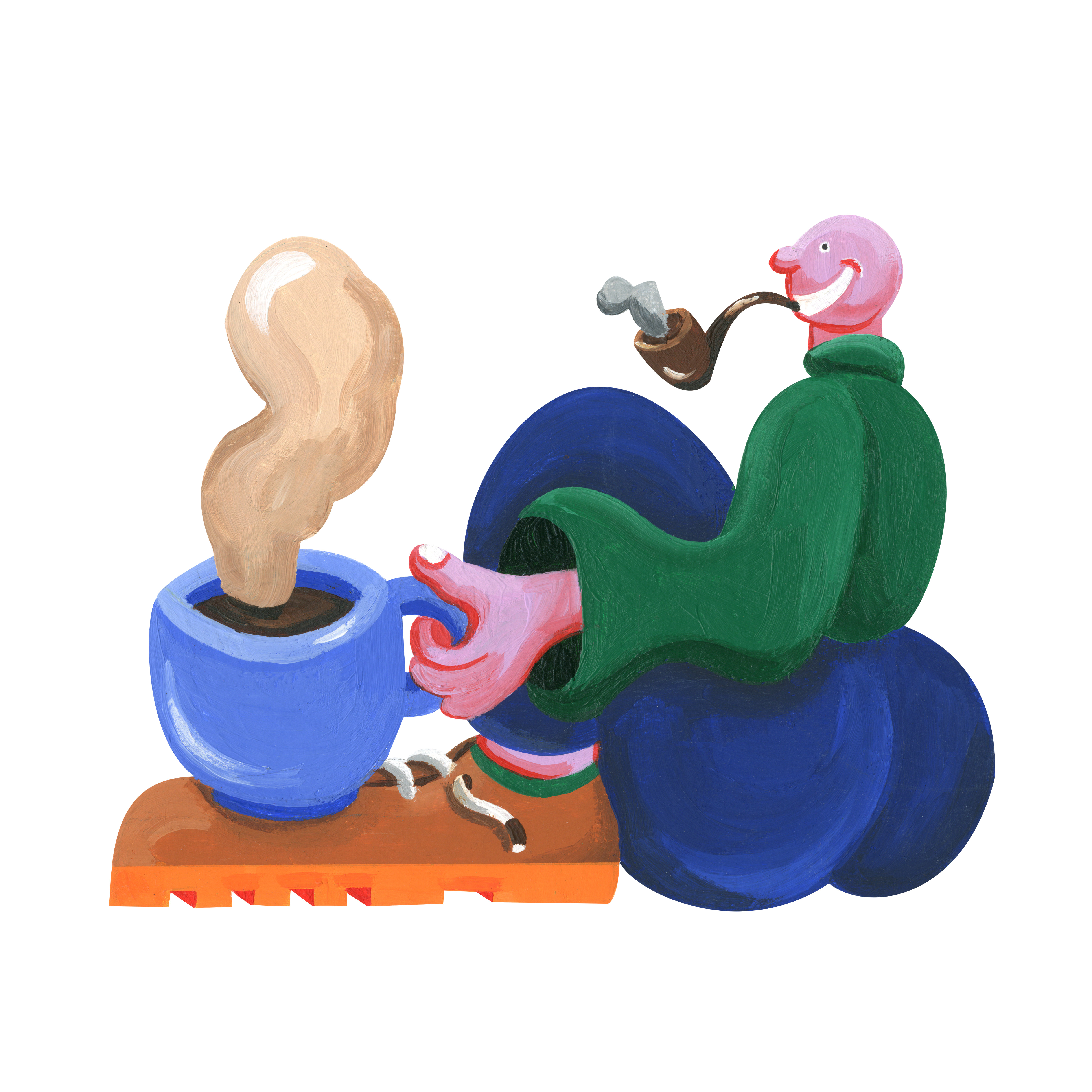Master Thesis: A user centered approach to circular product design
Proposing guidelines and using them to design furniture as a service
The demand for sustainable products is high and rising due to increased household consumption creating environmental pressure. One way to improve the product sustainability is to increase the use of the product by intensifying the use and prolonging the life cycle. Increasing the use creates a lower need for large quantities of produced products which reduces the environmental footprint. One way to increase the use is to allow the product to be reused over and over again for as long as possible. Currently the material reuse rate is as low as 6,7% in Sweden and 11,4% in all of EU which is far away from a circular economy.

The purpose of this project was to create a better understanding of the exchange situation of products, the moment when a product is made rid of by one user and is obtained by another, to provide guidance and an example of how this can be done. The main purpose was split into three objectives: to provide an understanding of the exchange situation, illustrate with a design case and present guidelines suitable for design for exchange.

Initially, product circularity was explored and a user journey was created to understand the pain points for different paths of obtainment and riddance for products in general. Sustainability design guidelines were gathered, sorted and guidelines specifically applicable to design for exchange were created. Based on all this a vision was formed of how a reusable product should be like. It was found through the initial research that one product group suitable for circular use is “products which are used often, but only for a certain period in life”. Through this, home furnishing for uncertain future living conditions was chosen. By evaluating all of the activities in the user journey for different obtainment paths, the circular path of subscription was chosen. Based on this, the design case was established with the goal to provide furniture as a service.

The concept developed in this design case is a modular sofa system offered through a subscription service which allows the user to access a sofa during a time in life with uncertain future living conditions.


The modular sofa system allows the user to build a sofa which suits like a glove to the current and future living space, allowing the user to express personality through the way it is assembled and may also be adapted for different occasions. By offering the sofa through the subscription service all who want a sofa that suit their needs, but do not want to commit because of an uncertain living situation, will find what they need.

Out of the pieces in the picture above, many combinations of a sofa can be built. In this case there are 10 cushion modules, 2 long-, 1 medium- and 5 short connection poles, 11 extension poles and 11 feet. Four example of how these pieces may be assembled is presented below.








This project provided an understanding of the exchange situation by mapping out all activities related to the obtainment and the riddance of a product in a user journey. A collection of 46 guidelines were presented as guidance for anybody looking to design product circularity from a user perspective. How these guidelines can be used were illustrated through the design case which developed a sofa suitable to be offered through a subscription business model. Through this, the project provided an example of a user centered approach to circular product design.
The entire thesis is available at:
http://studentarbeten.chalmers.se/publication/255737-a-user-centered-approach-to-circular-product-design-proposing-guidelines-and-using-them-to-design-fu






